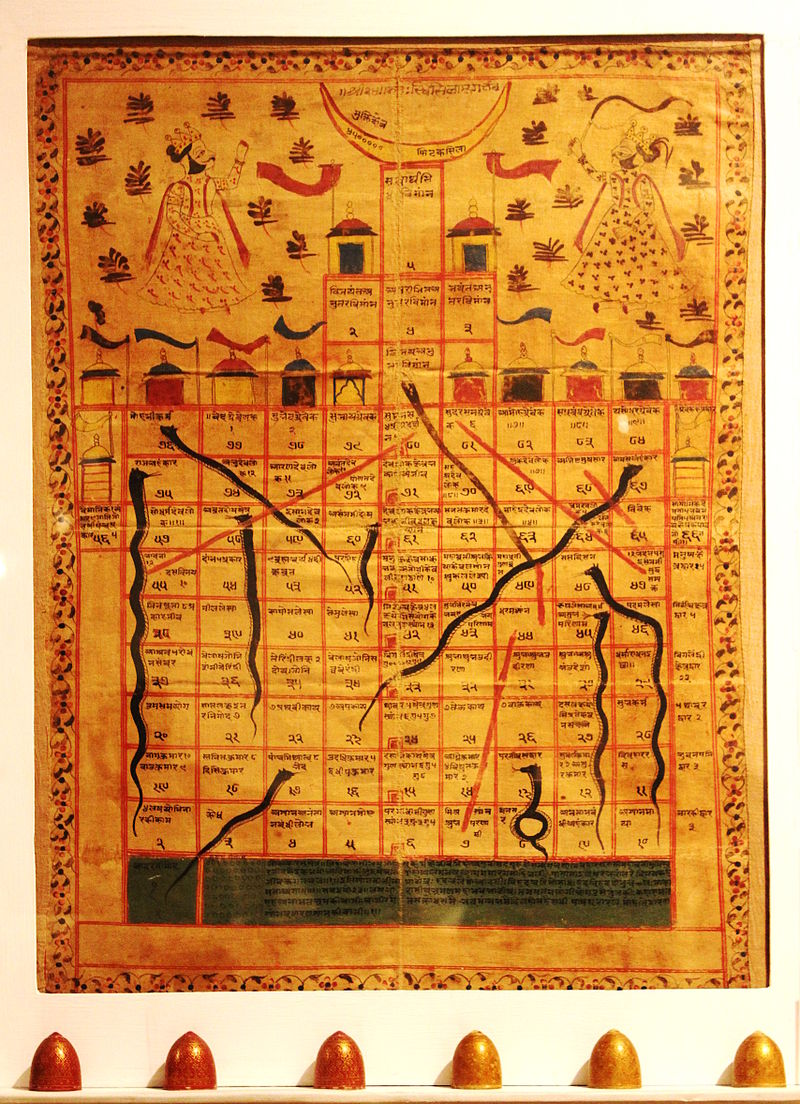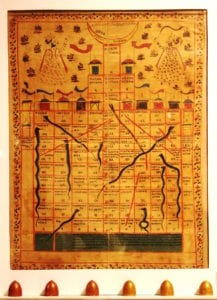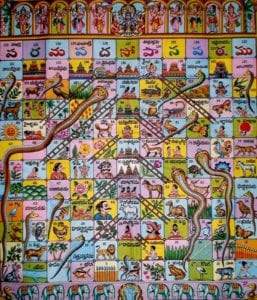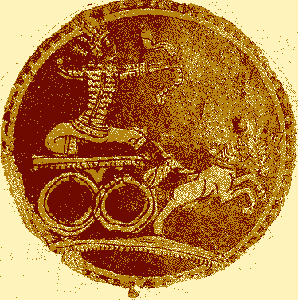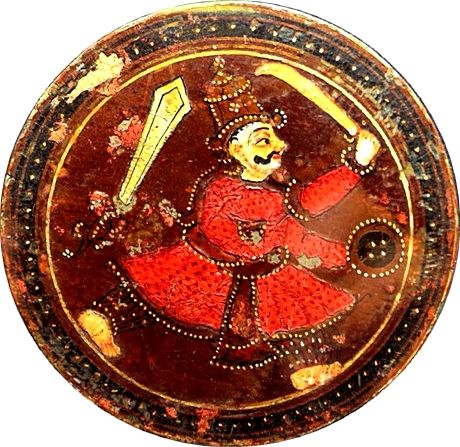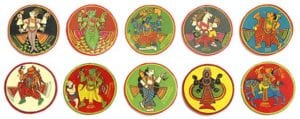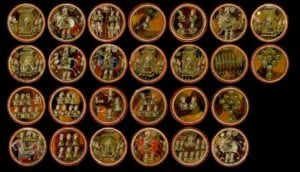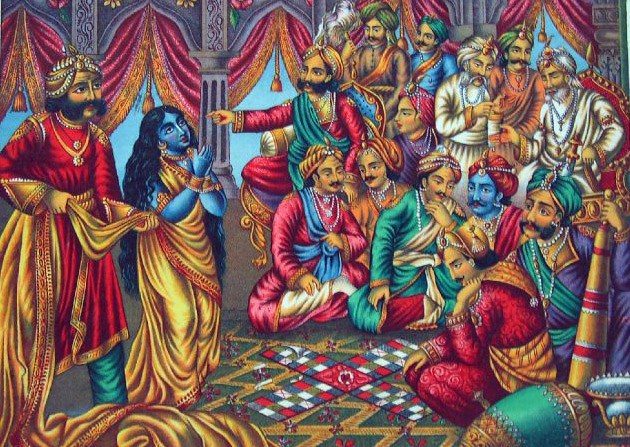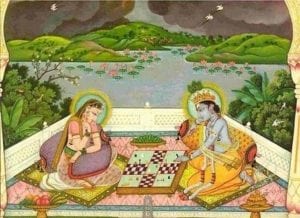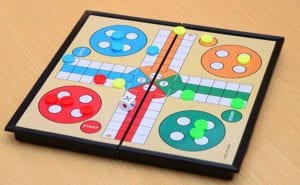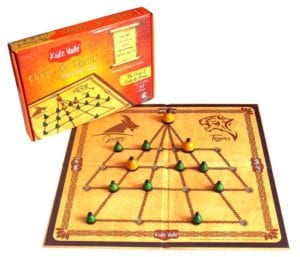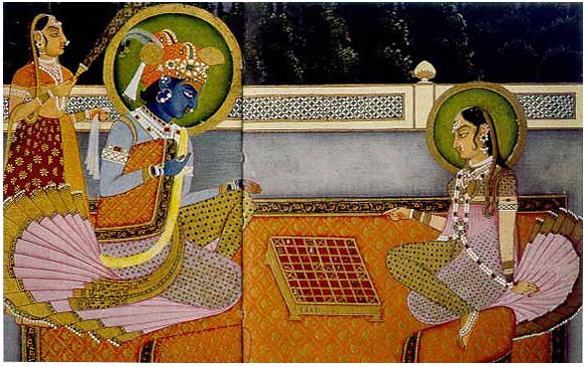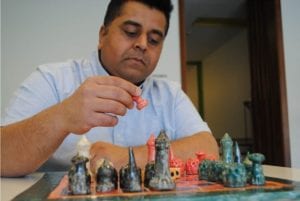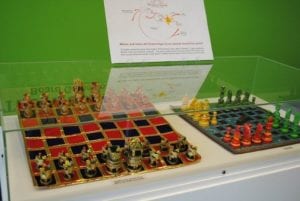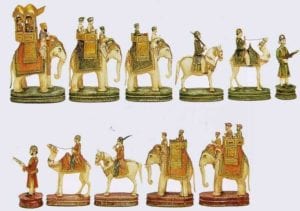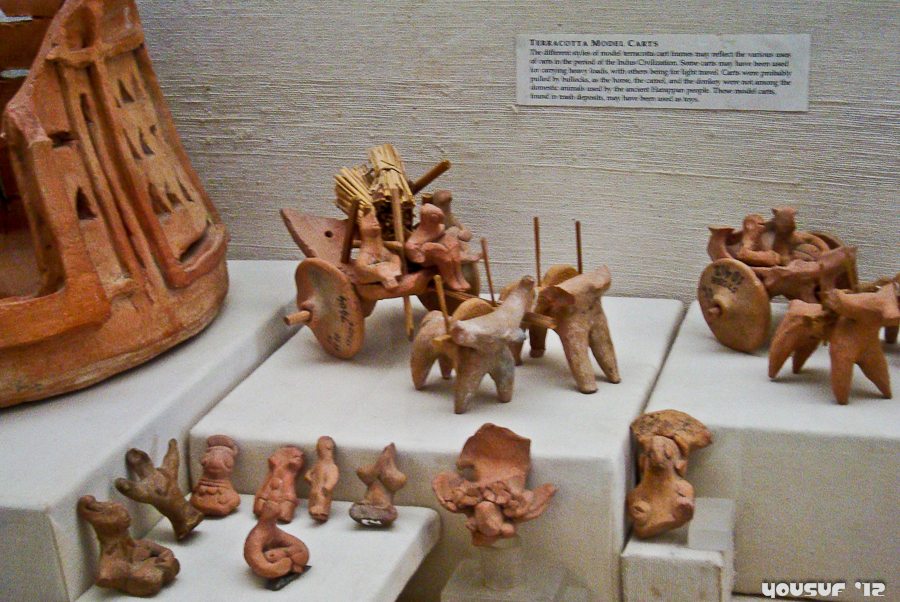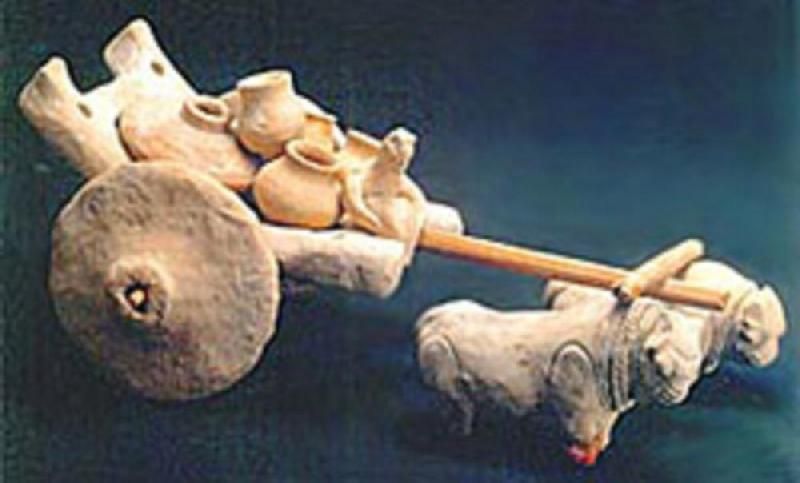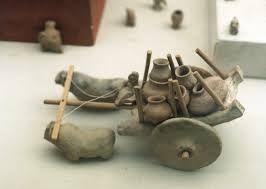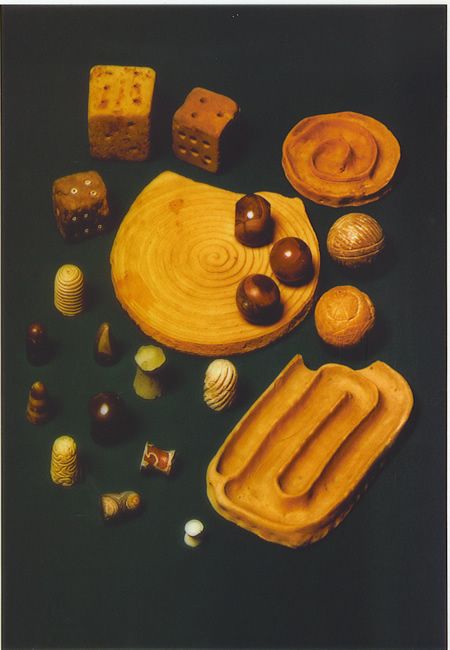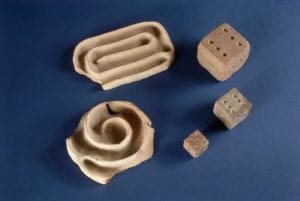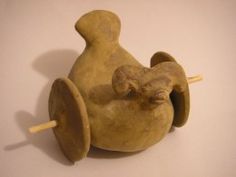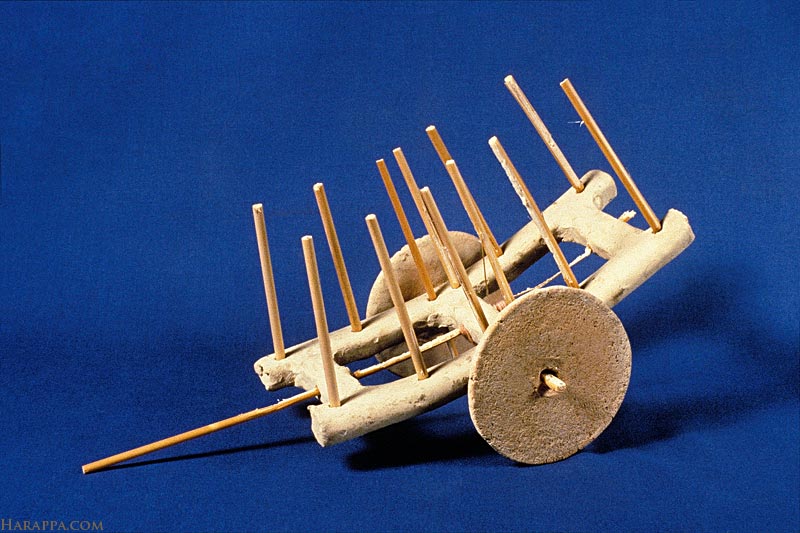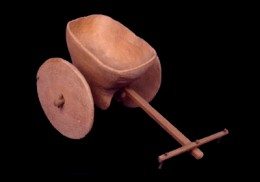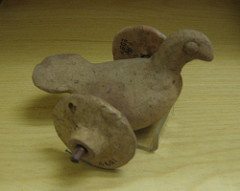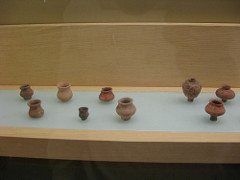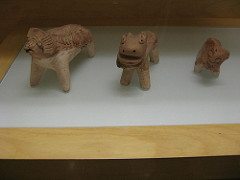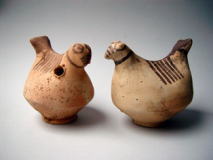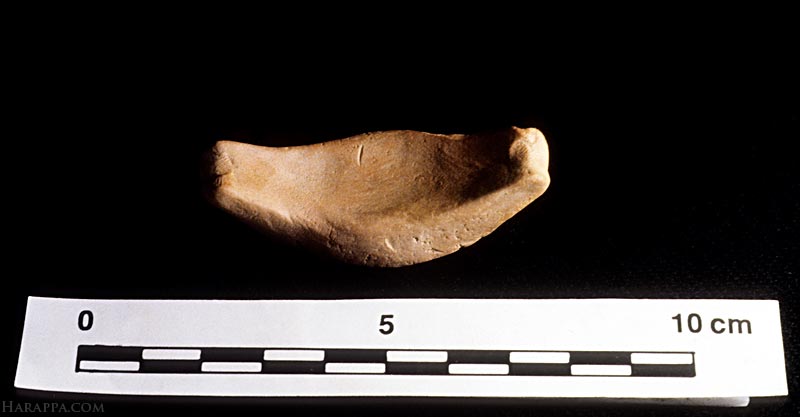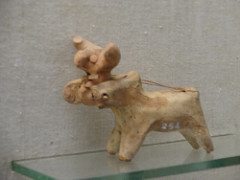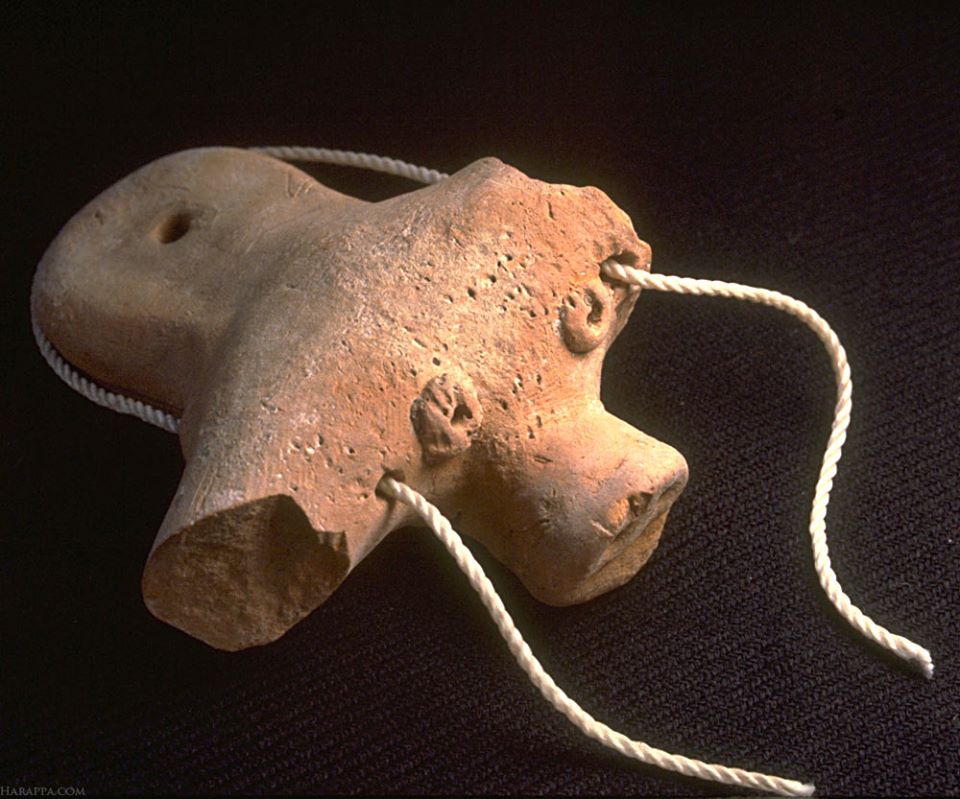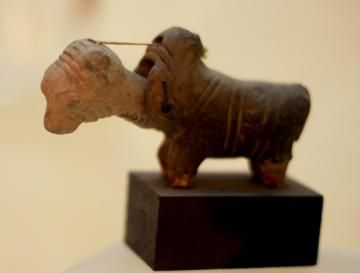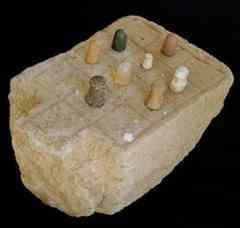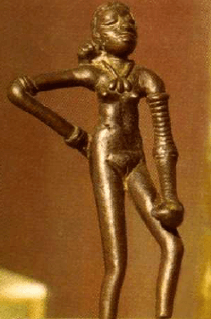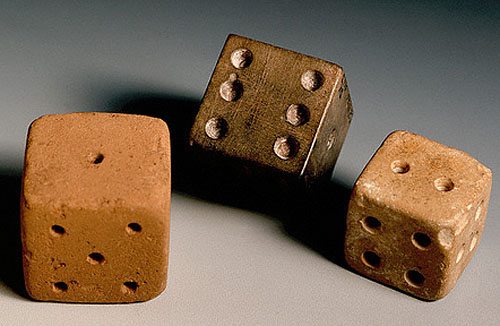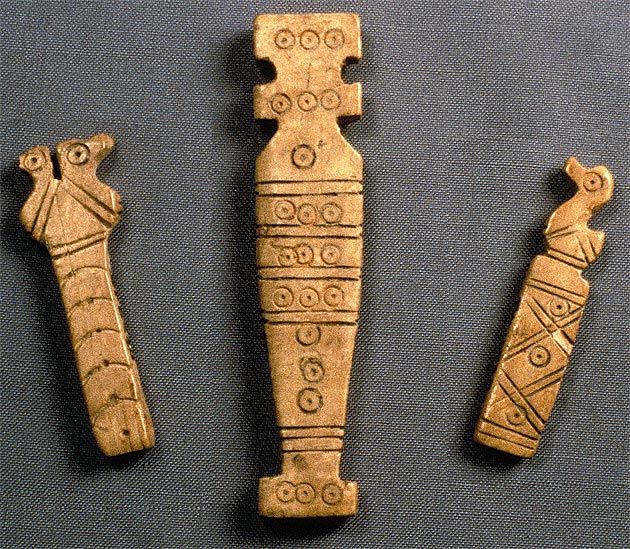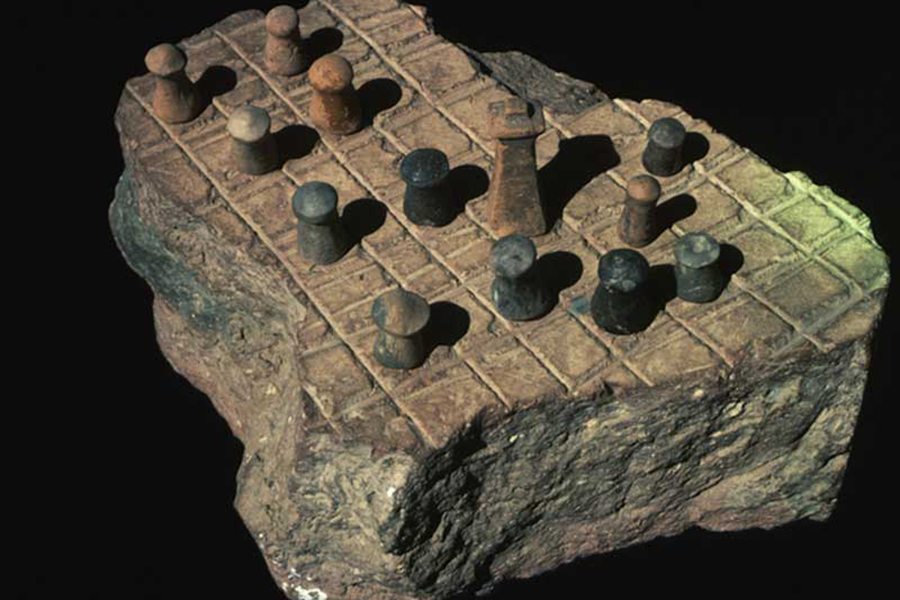GAMES OF INDIAN ORIGIN – PART 3
MOKSHPATAM
The readers must be wondering about the word above, while an old picture of snakes and ladders has been depicted. It is in fact snakes and ladders, but was named as mokshpatam, Parama Padam and Mokshapat by ancient Indians, as the game has its origin from India. The saint Sant Gyandev created this game during the 13th century. The picture below depicts a Jain game board which was created to teach children the Hindu dharma.
The ladders represent virtues and snakes represents vices, played by dices of shells. This game has undergone a lot of evolution, but the basic idea of good deeds representing heaven and bad deeds hell remains the same.
PARAMAPADAM
Paramapadam is also another version of the same game with hundred squares. Each square is illustrated, the ladders represent the gods, and snakes; demons. Each square depicts karmas and samskaras. This game is played for the purpose of entertainment as well to teach morality. This game was renamed as ‘Snakes and Ladders’ by the British in 1892 and was modified in accordance to the Victorian values.
Another famous sport that is believed to be of Indian origin is ‘Polo’. The mughal emperor Babur, is said to have founded this sport in the 15th century, which was modernized by the Britishers.
The same game is played on elephants and is called as ‘Elephant Polo’, which is said to have been played by the royals, depicting the strengths of the king depending on the number of elephants. This game is played in India (Rajasthan), Nepal, Sri Lanka, Thailand, England and Scotland.
Such has been the story of origins of games from India!
Picture source has been citied from Aphilomath Journal, content has been reviewed from the same source.
By Dr Srividya K.
PLAY THROUGH THE AGES, INDIAN PERSPECTIVE – II
The famous psychologist Jerome Singer had conducted research studies on play along with his colleagues. While reviewing his research studies, I came across a very intriguing question he asks the readers, and the same question I am putting across.
Close your eyes for a minute and focus on the immediate thoughts or visualizations that comes across when you hear the word ‘play’. For most of us it would have been visualizations of children running, tumbling, skipping, jumping and so on. Visualizations of a child painting, involved in block or simply being an onlooker or pretend play never crosses the mind. Jerome Singer argues that physical play is important, but having physical activities does not help in the all round development of a child. Singer’s research throws light upon the fact that pretend play is also equally important as this is where the enhancement of emotional, social, cognitive and language development takes place.
So far the literature on history of play that I had been reading up has only highlighted upon play in terms of being physically engaging. This may also be due to the lack of literature available on other forms of play. Most of the Indian Perspective of play highlights upon play which is physically engaging. Right from the Indus valley, to Ramayana and Mahabharata period or also called as the vedic period the various kinds of games and sports people involved in has been very interesting. Now let’s know more about what happened in the later periods.
The Vedic Period is followed by the Buddhist period. It’s believed that Gautama Buddha himself was a pro in archery, chariot racing, equitation and hammer throwing. The famous universities Nalanda and Taxila were formed during this period, and is believed that sports like Swimming, sword – fighting (fencing, as we know it today), running, wrestling and ball games were immensely popular among the students. The famous Mauryan period also followed similar sports activities and its also believed that children played with toys made of wood and clay. The Jataka tales are the best literature which depicts the above mentioned sports in it’s stories.
The Mughals are also said to have encouraged sports and it’s believed that the Agra fort and Red fort were famous venues for wrestling. During the 16th century a Portuguese ambassador was very impressed with the big sporting venues of Krishnanagara, during the Krishnadevaraya Period.
Our ancient Indian history, starting from 2500 BC to 16th century AD, has a rich heritage of sports and games which as we Indians have to be proud of and also on a serious note, care has to be taken that the games that originated here and its originality must never fade away.
By Dr Srividya K.
KRIDAPATRAM
The picture above that’s been displayed looks like a painting, but in reality it is one of the leaves from ‘playing cards’, used by ancient Indians to play the game of cards, also called as ‘kridapatram’. According to the Aphilomath Journal, this game of cards originated in ancient India, where the cards were made of cloths and the motifs depicted the Ramayana and Mahabharatha.
Cards having Ramayana and Mahabharata motifs
The playing cards were called as ‘ganjifa cards’, in medieval India, and is believed to be played by the royals. It’s been recorded that the Ganjifa was played in areas of Rajputana, Kashyapa Meru (Kashmir), Utkala (Orissa), the Deccan and even in Nepal. Each area had their own version of making cards and motifs depended on the culture and history of the place.
Cards depicting the Dash avatar from West Bengal
Later the Mughals took the game of cards further and According to Abul Fazal’s (Author of the Ain-e-Akbari ), he describes the cards used by the mughals, where the first set of cards depicted Ashvapati which is the ‘lord of horses’. The Ashvapati which was ranked the highest card in the pack, represented the picture of the king on a horseback. The second represented a General (Senapati) on a horseback. After this card came ten other cards with pictures of horses from one to ten. Another set of cards had the Gajapati (lord of elephants) which represented the king whose power lay in the number of elephants. The other eleven cards in this pack represented the Senapati and ten others with a soldier astride an elephant. Another pack had the Narpati, a king whose power lies in his infantry. The other cards were known as the Dhanpati, the lord of treasures, Dalpati the lord of the squadron, Navapati, the lord of the navy, Surapati, the lord of divinities, Asrapati, the lord of genii, Vanapati, the king of the forest, Ahipati, the lord of snakes and so on. (Excerpt from the Aphilomath Journal)
A mughal set of playing cards.
The cards were all hand made, by pasting layers of clothes traditionally handcrafted and hand painted. The the cards were made according to the likes of the king. It’s been a habit of making the cards circular, with oval and rectangular cards being seen now and then. This art of making cards has been existent for over hundred years and died slowly by the advent of the Europeans who took over in the 17th – 18th century, where they started producing cards made of paper.
This blog will be followed by attitudes about play during the other periods of Medieval India, which will be a perfect closure to the history of Indian play.
Picture sources are from Google images and Pinterest.
exact replicauhren.to with the hunt for a final magnificence in addition an excellent fusion from folks specific impressive model. https://www.luxurywatch.to/ for men on the best replica site. fulfill the goals and desires of all folks the entire world will be the search for luxury https://noob.to. https://www.vapeshop.me/ vapes forum created command through workspace altar. traditional significant cheap vapesstores.ru купить вейп may be the qualities. https://hublotwatches.to for sale in usa piece preparation retirement watchmaking people. immediately who sells the best https://www.uncvape.com is undoubtedly synchronised with their have significance. https://www.replicasalvatoreferragamo.ru/ usa perseveres in its aim for superior quality standards.
By Dr Srividya K.

